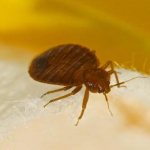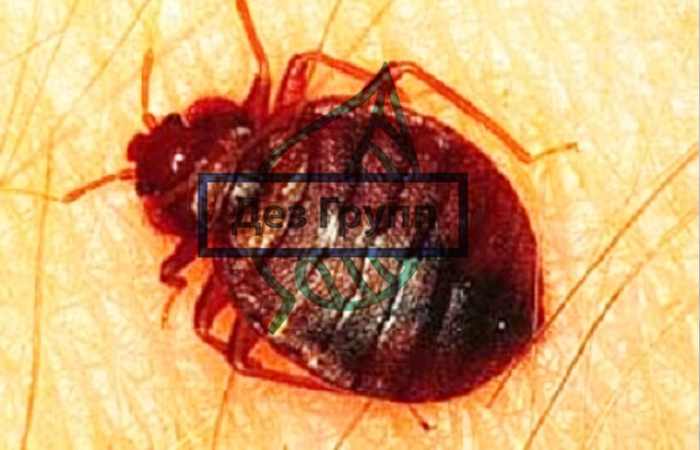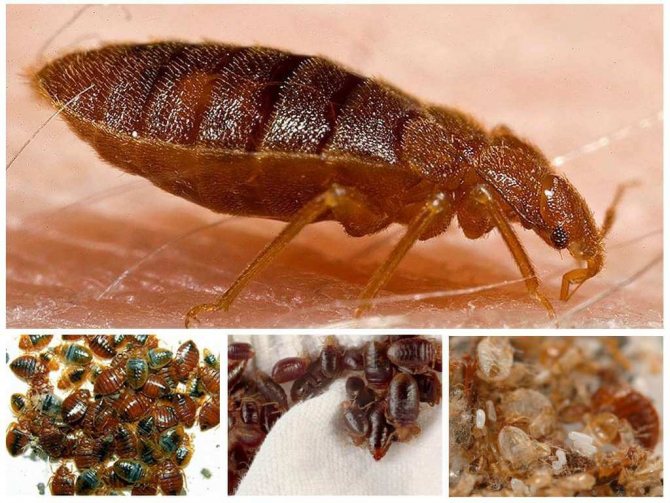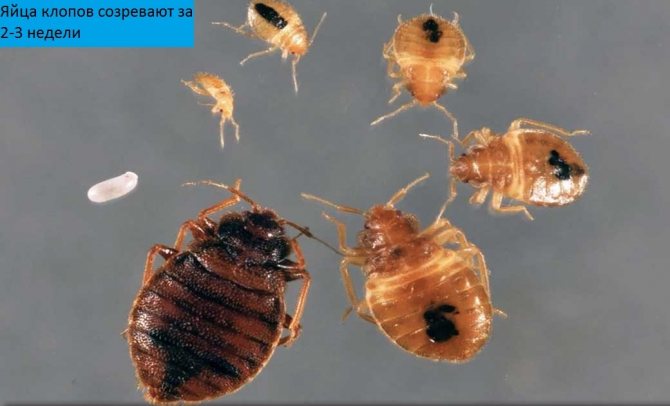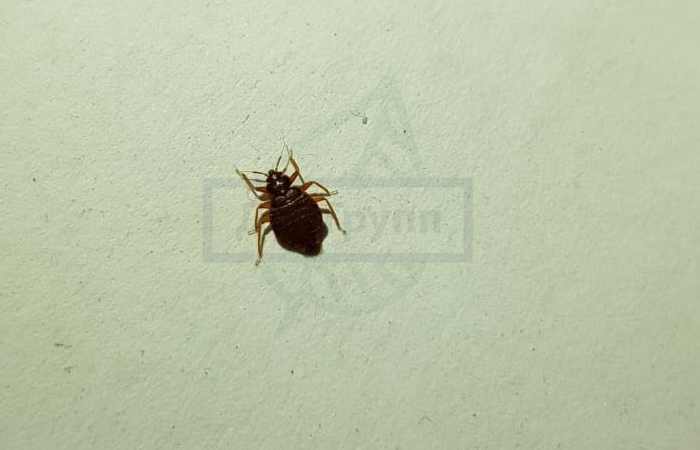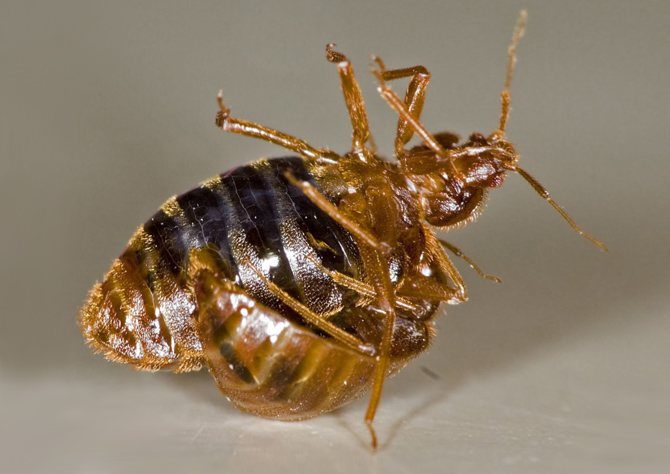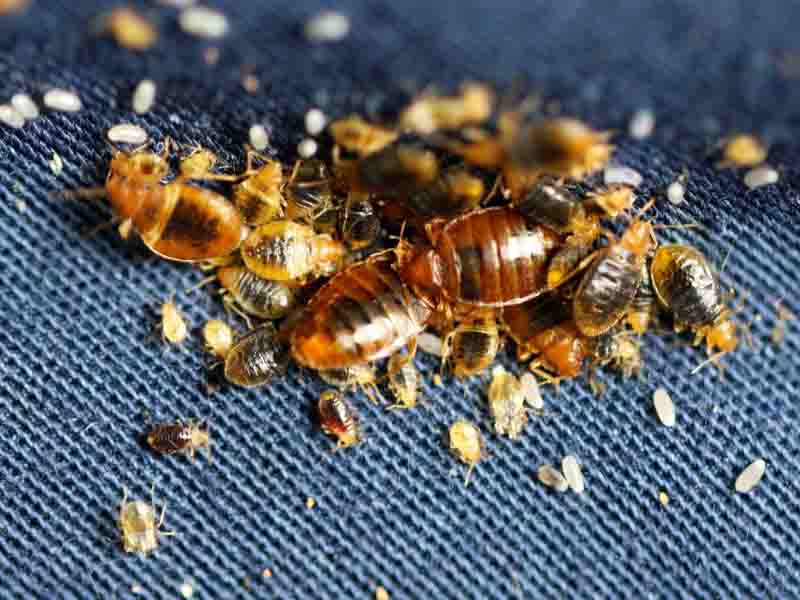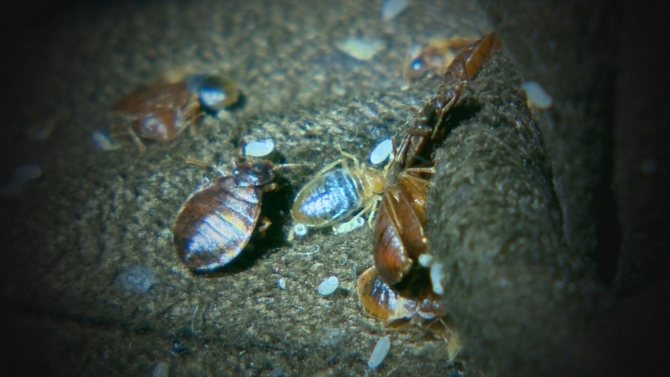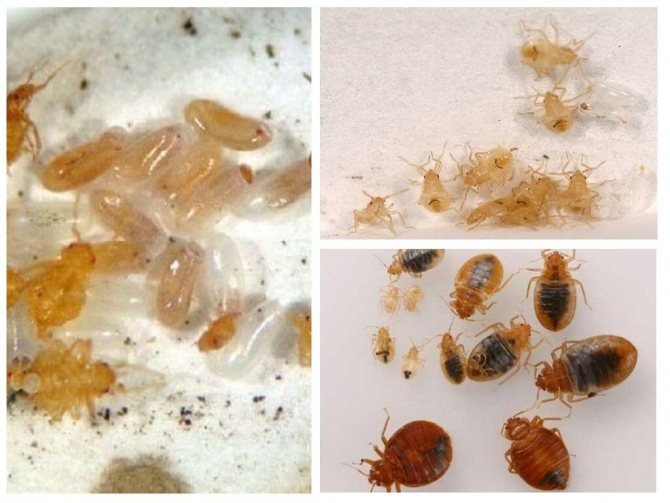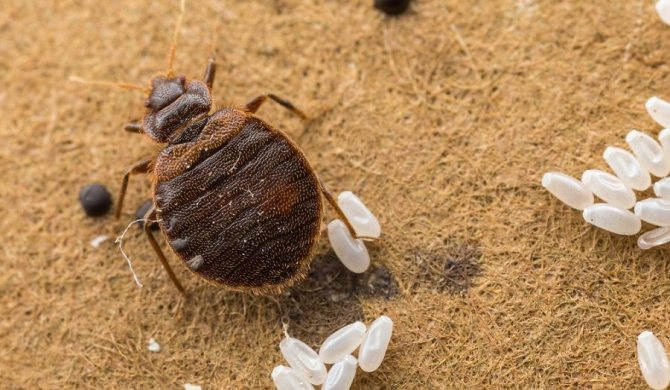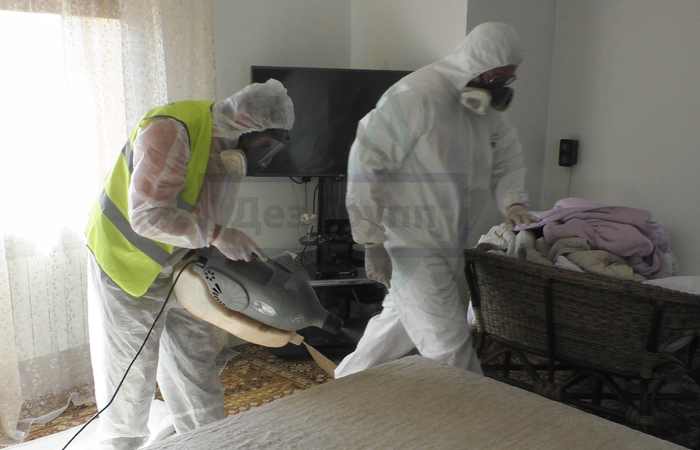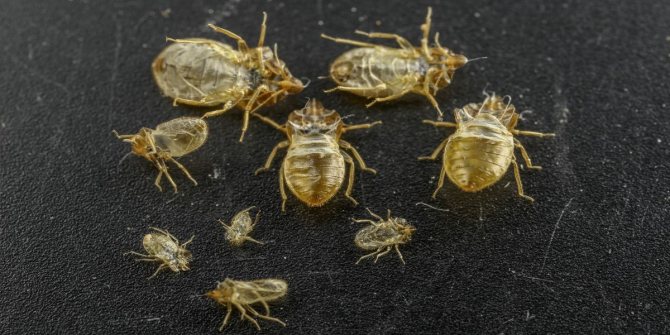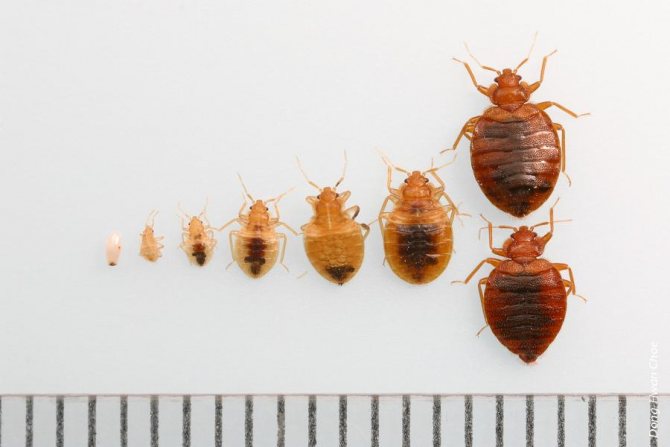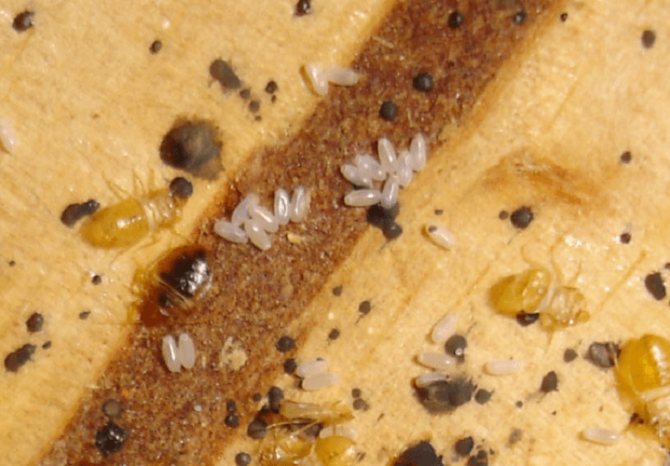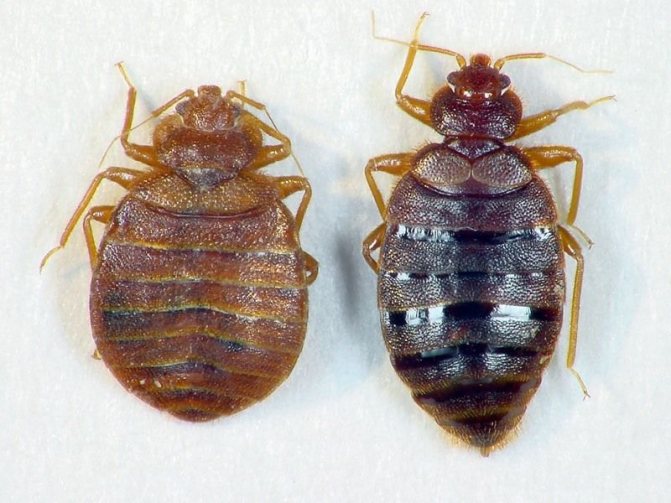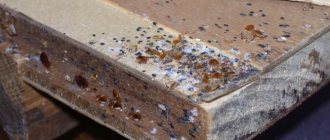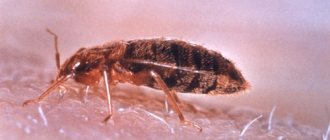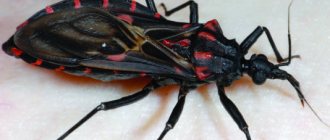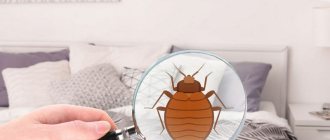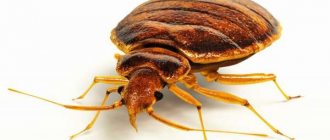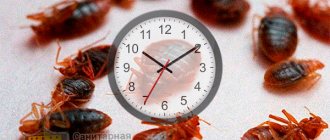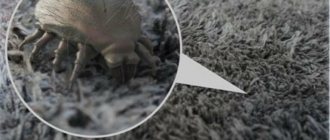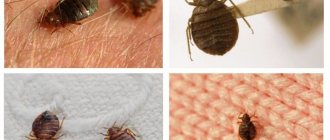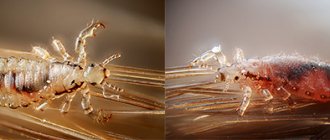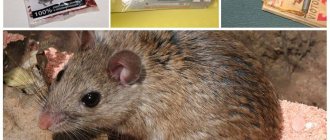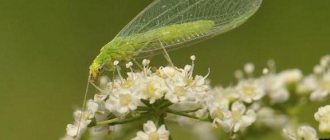Bedbug habitats
Harmful insects have firmly established houses and apartments, but, in order to avoid trouble, they try not to be seen by the owners of the dwellings; they go hunting only at night and hide in the most secluded places: cracks, crevices, folds of furniture, cavities behind paintings, under carpets and mattresses, between books.
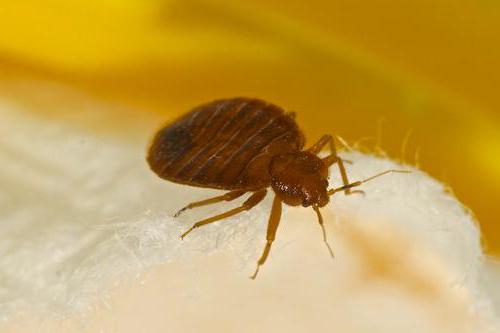
There, parasites give birth to numerous offspring, and they do it very actively. How quickly do bed bugs multiply in an apartment?
Answers to popular questions
In order to influence the reproduction of bedbugs, to suspend this process, to completely destroy the colony in the housing, it is important to know the answers to some questions. For example, where do these nasty insects usually hide? How to detect their appearance in the house? Read on
When do the larvae hatch?
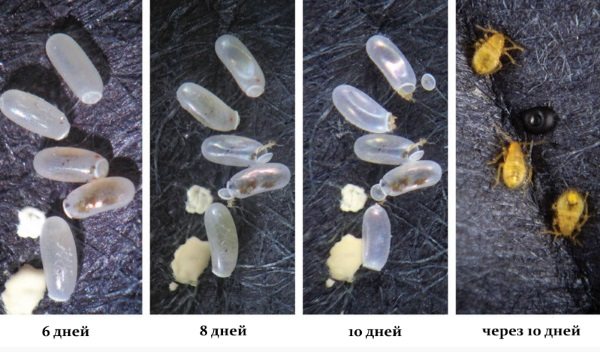

The incubation period, during which the eggs mature, is about seven days. If the temperature is below five degrees, the development processes proceed more slowly or stop altogether. However, after the onset of favorable conditions, further formation of larvae occurs.
Nymphs grow for seven weeks, surviving five molts, before reaching the adult stage, the adult insect stage. The rate of development depends on the availability of a sufficient amount of food, favorable environmental conditions.
How do I know if I have bed bugs at home?
Bedbugs can appear in every home, this factor does not depend on the observance of cleanliness by the owners of the home, maintaining order. The penetration of parasites occurs more often when buying used or antique furniture, things, and other household items.
If the parasites have already chosen housing, they can be detected by the appearance of bites on the body, which are arranged in the form of a track. These wounds can become inflamed when an infection is introduced, bleed, in addition, their appearance is accompanied by severe itching.
If bites are found, it is recommended to immediately inspect the room, especially its secluded corners, for the presence of nests, that is, places of localization of a large number of individuals.
You should be aware that ruining the nest is not an effective measure for the destruction of parasites; for their removal, the mandatory use of toxic substances is required.
Why are bedbugs dangerous?
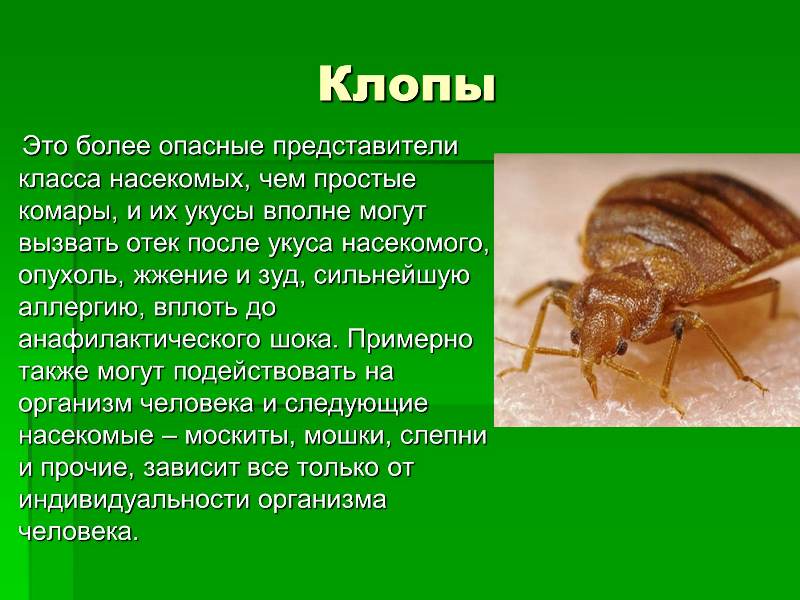

Bed bugs are carriers of a number of dangerous diseases of infectious etiology. Since they do not differ in dietary selectivity, they can attack animals, rodents, there is a risk of contracting typhus, salmonellosis, hepatitis, tuberculosis, and other unpleasant ailments.
In view of the above, you need to know that it is recommended to take measures aimed at destroying bedbugs and preventing their appearance immediately after detecting signs of the presence of parasites. Delay is fraught with the rapid growth of the colony, which will be extremely difficult to eliminate.
Fertility of females
One female is capable of hatching from 30 to 70 larvae per month; over the entire life cycle, this indicator is about 500 units of the young generation, most of which successfully survive to adulthood. To lay eggs regularly, the female needs to eat normally. Moreover, the appetite of females is many times greater than that of males. This factor partially answers the question of how bedbugs breed in an apartment.For the most part, bed bugs arrange their nests nearby, which are the most comfortable in terms of access to food: after all, larvae and adult insects need fresh blood, and the close location of the nest significantly shortens the path to the prey. Bedbug nests, of which there are often several in one apartment, look very untidy, as they are a storehouse of excrement, egg shells and empty shells left after molting. It is in such a mess that female bugs are most comfortable to lay and breed.
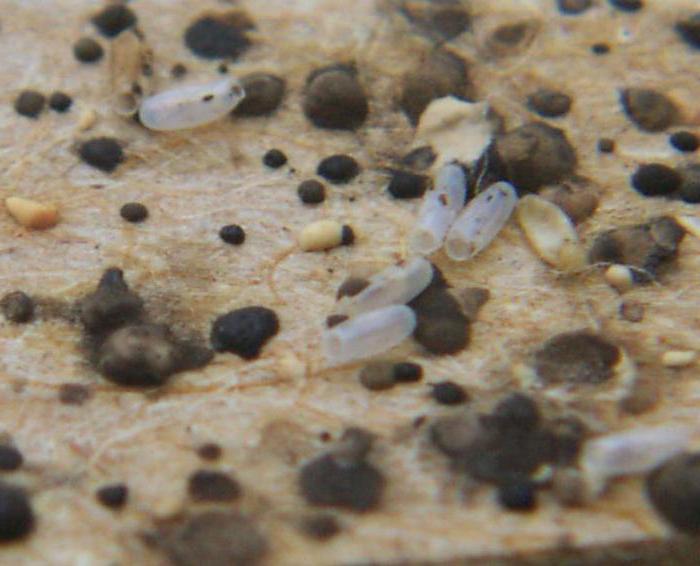

How do bed bugs breed in an apartment? Knowing the answer to this question is very useful in solving the problem of ridding a living space of such parasites.
Where bugs usually hide
The second difficulty during the fight against blood-sucking insects is a secretive lifestyle. Bedbugs choose dark places, cracks and corners, spaces behind paintings and under the baseboard for living and breeding, the seamy sides of carpets. It is almost impossible to meet a blood-sucking parasite during the day.
The first task of the exterminator is to find all the bedbug nests. This is a disorderly accumulation of excrement, chitinous membranes, adult insects and larvae. Knowing the features and main places where bugs usually hide greatly simplifies the process of struggle and increases the efficiency of processing the room. Large nests are often located near the sofa and bed, in mattresses and under the pillow. This is the most comfortable spot for bedbugs and provides them with abundant food without the cost of moving to a food source.
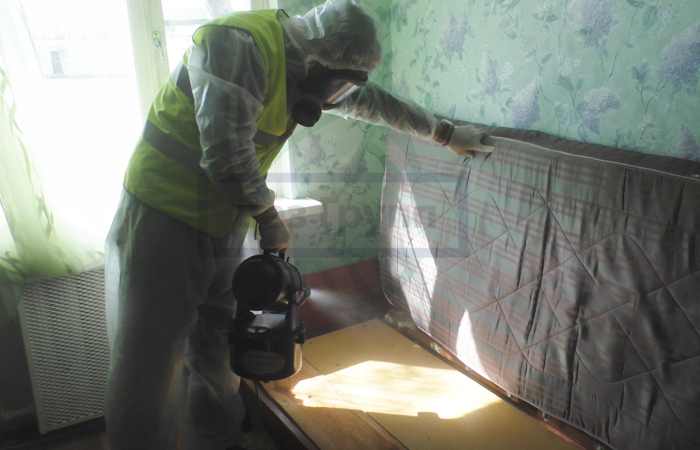

Blood-sucking bed bugs have a flat and compact body that allows them to hide in almost any narrow crevices, holes, hidden spaces. Entomologists and exterminators name the following favorite habitats for parasitic insects:
- Rest area, sleeping place.
The largest accumulation of larvae and adults was noted on the seamy side of the spring block, in the joints of the metal and wooden structures of the sofa, on the lower edge of the mattress, in the folds, armrests, and on the lower back of the sofa. - Furniture items.
If the population of bedbugs is large enough, their habitat expands to tables, chairs, bedside tables, soft armchairs. Insects choose places with untreated wood, fabric, various crevices and cracks. - Walls, ceiling and floor.
The favorite shelter of blood-sucking bugs is the space under the baseboard, the edges of the loose wallpaper, peeling paint, cracks and crevices in the floor covering.
Among other habitats of bedbugs, it is worth noting the reverse side of paintings and carpets. Adults choose the perimeter of the product and the place that is attached to the wall as their habitat. You can also find larvae and adults in the openings of the walls intended for sockets and switches, in the upper folds of curtains, curtains and curtains.
How bed bugs breed
Reproduction of domestic bugs is carried out by laying eggs, before the start of which the female must go through the fertilization process. This action takes place in a special way and is called "traumatic": the male attacks the female, pierces her abdomen with his genital organ, into which he releases spermatozoa. For a female bug, such mating occurs once in her entire life. How do bed bugs breed if one male appears? It is very active, because the latter is able to mate endlessly (sometimes up to 200 times a day) and with any partner: a female, a male, a nymph (larva) or any other insect (even a cockroach). Observations have shown that almost all insects in the population, regardless of age and sex, have abdominal injuries, which indicates a relationship with an adult.
Pairing
The female's reproductive system is not involved in the mating ritual. She will need it only in the future, when building the masonry.The male mates with her forcibly - in a way that is called "traumatic insemination." With a penis that is sharp as a needle, it pierces any part of the abdominal cavity and injects sperm inside.
The partner is left with an open wound - the gateway for the introduction of infection. And the male instrument is always covered with pathogenic bacteria. But her body has adapted to such aggression. Right in the body, under the abdomen, there is a pouch filled with enzymatic immune cells (lysozymes) - the organ of Berlese. This recess in the exoskeleton serves as a kind of sanitary area and storage. Within 2 hours, immune proteins attack and inactivate the membranes of pathogenic viruses and bacteria that could enter the body with the semen.
Through the bloodstream, part of the sperm reaches the reproductive organs - the ovaries. Fertilization of developing eggs and their laying occur constantly, throughout life. Marital wounds are also healed due to the nutritious seed protein, which is partially absorbed by the digestive system.
Features of copulation in bedbugs
When copulating with a bug of the same sex, spermatozoa are mixed, and so with each change of partner, until one of them hits the female. The obtained seed material is enough for the female until the end of her life. For many, the method described above, which tells how bedbugs reproduce, is surprising. But it is this method of fertilization that allows bed bugs to survive in negative conditions; at the onset of a period of prolonged fasting, a number of immature eggs are used as food.
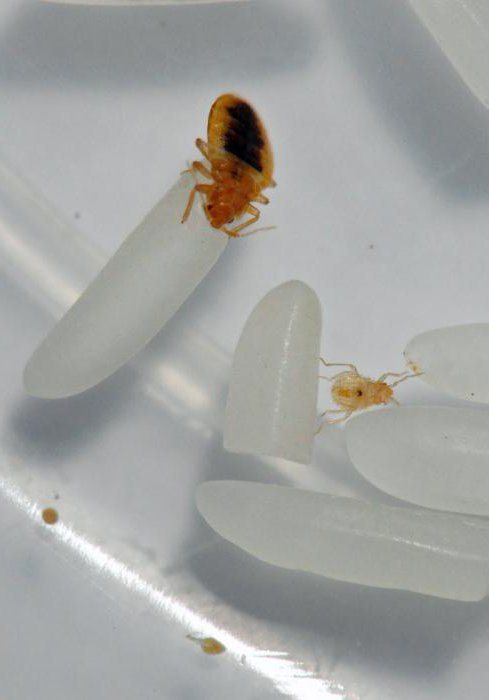

With the improvement of conditions, the insect quickly recovers in reproductive activity.
Why there are more bedbugs in the 21st century
Scientists identify several reasons due to which the dynamics of the growth of the population of blood-sucking insects began to be observed:
- Changes in climatic conditions towards warming, a significant increase in the number of heated rooms have a beneficial effect on the reproduction of bed bugs.
- Migration. People began to travel more and, accordingly, visit countries that are historically the homeland and place of accumulation of thermophilic parasites. Insects began to actively spread across all continents, especially since it is not difficult for them to hide in luggage.
- A large number of second-hand markets, distribution of goods from contaminated disadvantaged areas, which then enter the apartment.
- Rapid adaptation of insects to insecticides. Those funds that killed bedbugs on the spot in the 80s of the last century, now almost do not work on them. The main task of insecticidal agents at the end of the last century was the destruction of cockroaches, the rest of the insects were considered as a side target. The formulas of the drugs were constantly changing so that the cockroaches were not addictive. The variety of active substances provoked the resistance of the bug population to insecticides.
- An abundance of advertising and an illiterate approach to the destruction of bedbugs in an apartment. Obsessive advertising constantly convinced people that anyone can get rid of parasites, it is enough just to buy a spray can and after a couple of simple manipulations the bugs will no longer appear. Not only do absolutely useless means often become objects of advertising, and there is zero sense from them, but also the wrong technology for processing the premises is promoted, which cannot stop reproduction. The choice of an ineffective means, neglect of the processing process become the reasons for the reproduction and mass infection of apartments, entrances and houses.
Bedbug eggs: description
How quickly do bed bugs multiply? After fertilization has taken place, the female bed bugs begin laying eggs, and can lay from 4 to 10 units per day.
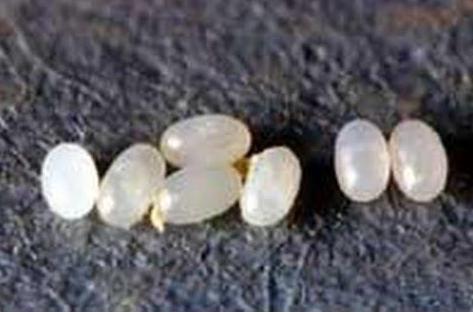

Bedbug eggs, which outwardly resemble rice grains (white, slightly more than 1 millimeter in length, oblong in shape), are characterized by high resistance to negative external influences. For example, the poison with which parasites are poisoned is completely harmless to them, since it is not able to penetrate the shell. Therefore, after the treatment of the room from bedbugs, the likelihood of their reappearance remains quite high. As an illustrative example and an answer to the question of how bugs reproduce: new pests will "please" with their presence in one to one and a half months.
Submission of female linen bugs to males
Perhaps entomologists are most surprised in the life of bedbugs by the process of fertilization of females. Individuals of different sexes do without mutual consent. What happens entirely depends on the male's uncontrollable instinct. Like some kind of ram, it accelerates, and then rushes to the "girl", gradually picking up speed. The distance is small, but this fact does not contradict him. But…
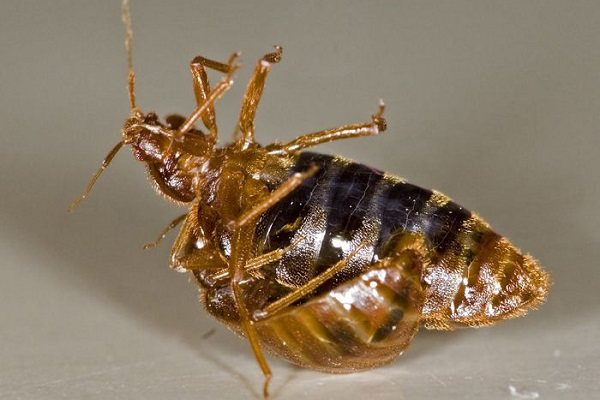

Equipped with stupidity and it is not clear what else from the moment of his birth, the male during his impulse does not distinguish to whom he rushes headlong. Therefore, it is not uncommon for males to mate with each other. Of course, reproduction is out of the question. Maneuvering along tiny corners hidden from the human eye, the bug nevertheless stumbles upon a female.
Another curious proof of their recklessness: males sometimes even "sting" cockroaches. The results of such copulation are easy to predict, however, it is much more interesting (with an extremely rare opportunity) to personally doubt the “bad taste” of zealous “lovers”. In the future, we will consider the "traditional" intercourse.
Having set out, the male approaches the female at high (relatively) speed, after which, at the moment of immediate proximity, he pierces her abdomen (abdomen) with the genital organ. The semen is injected into the hole. The female experiences only pain from violent actions, but does not interfere with the process in any way. Reproduction of bedbugs also does not bring joy to any of the characters: they are so programmed by nature!
It is also curious that a male can perform a similar, let's say, procedure about a hundred times in one day! But with females, the opposite is true: they mate only once in their life. This language cannot be called loyalty. It's good at least that bugs alone are not capable of breeding! Recall that the life of the bug is approximately 12-14 months.
How an insect develops
How do bed bugs breed? Under favorable conditions, after three to four days, larvae (nymphs) appear, differing from adult specimens in a lighter shade of the body, smaller dimensions and inability to fertilize. At the initial stage of their development, the nymphs are so transparent that through their shell you can see the droplets of blood sucked from the victim. The nymph begins to feed on blood from the first days of its existence and, with a sufficient amount of it, it actively grows.
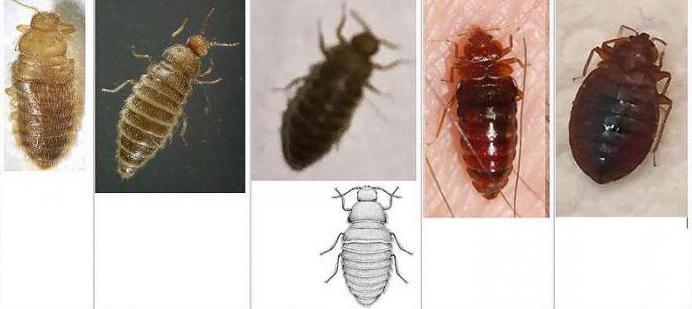

In the process of growing up, it manages to renew the shell 5 times. Moreover, the change in the skin directly depends on the degree of satiety of the insect. The color of the cover varies from light to dark brown or dirty yellow; the insect becomes black after eating: the more the bug has drunk blood, the darker its color will be.
Life cycle of bedbugs
The bug is an incomplete transformation insect. The development of eggs in favorable conditions occurs in 1 - 1.5 months. If external factors do not contribute to the process, the formation of adults from the egg can be delayed for 3-4 months.
An insect egg is difficult to find, it does not always reach even 1 mm in length. The life cycle of bedbugs begins with the larva, which emerges from the clutch in 3-4 days.Outwardly, it looks like an adult insect of small size. The second name of the larva is nymph. They are unable to reproduce and are much smaller than adults.
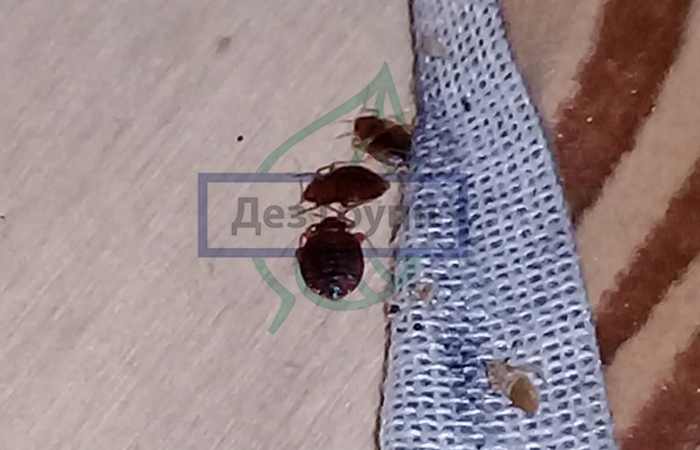

During growth and development, the nymph sheds about 5 times, shedding the chitinous membrane. Normal molting is possible only after the stomach is completely filled with blood. On average, it takes 5-7 days to change the chitinous layer. The transformation from a larva to an adult bug occurs in 30-45 days. Development slows down significantly if the air temperature drops below + 20 ° C. And at temperatures below + 15 ° C, the insect hibernates.
Parasitic activity of bedbugs
The bite of an adult bug in the first hours is painless due to the injection of a special anesthetic substance contained in saliva by insects. The consequences of nighttime meals of the parasite are found only in the morning, when the swollen red dots begin to itch after a few hours. A bed bug larva consumes less blood than an adult, but it delivers much more discomfort to a person due to its massive number: there are several dozen young insects on the host's body for one adult bug. In addition, the larvae are not able to inject anesthetic saliva, so their bites are very sensitive and cause a lot of anxiety to humans.
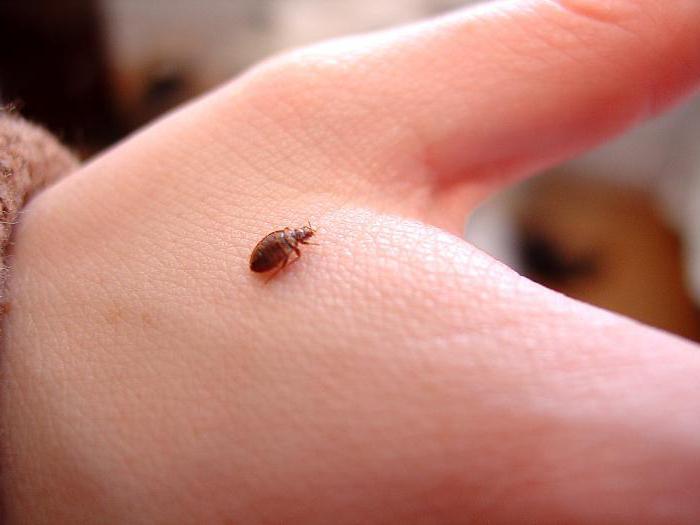

He tosses and turns in a dream and crushes parasites with his body. Therefore, very often on the bed you can find small bloody specks, most often arising from larvae and young crushed bugs with a chitinous membrane that has not yet matured.
How do they eat
Micro-monsters crawl out of hiding at night and look for a sleeping person in bed. In search of food, the most hungry can crawl up to 30 m. They are attracted not at all by the smell of the victim, but by a chemical signal - they are guided by the carbon dioxide that people breathe out. They bite in areas accessible to them - hands, face, neck. And mainly people whose blood vessels are close to the surface of the skin.
We suggest that you familiarize yourself with Prophylaxis against bedbugs in the apartment
They are not without reason compared to vampires. For the extraction of food by nature, a piercing-sucking jaw apparatus is provided. The ability to sense vibration allows him to easily find the nearest capillary. A small "vampire" pierces the skin barrier and easily reaches the vessel with the proboscis. The proboscis has a specific structure.
Along with adults, newborn offspring also suckles blood every day. They don't have anesthetic saliva yet. Therefore, they bite more sensitively, leaving painful abscesses and a large area of redness.
Different people react to toxic saliva differently. In some, the bitten areas are barely noticeable and almost painless. In others, they itch a lot, and saliva causes a strong allergic reaction. Allergy symptoms are persistent itching, persistent redness and inflammation for weeks. Up to Quincke's edema.
How to get rid of bed bugs
In the process of forced cohabitation with bedbugs, a person is constantly tormented by the question of how to get rid of such obsessive parasites. Unlike cockroaches that inhabit premises in which the cleanliness is far from ideal, bedbugs are completely indifferent to sanitary conditions and take a fancy to any room. Therefore, when such parasites are found, they should be etched out by any means, until the latter have time to multiply en masse.
One of the most effective solutions against bedbugs is a combination of soap, turpentine, kerosene and alcohol. The resulting tool is required to process the places of greatest accumulation of parasites. Bedbugs do not tolerate the aroma of wormwood, so it is recommended to place the plant in the supposed habitats of parasites. The latter will leave their habitat at an accelerated rate.
Bedbugs do not withstand low temperatures, so you can get rid of them using a cooling method, especially important in winter.For this, furniture from the apartment, if possible, should be taken outside for several hours.
Reproduction inhibiting factors
In nature, the reproduction of bedbugs is limited by superparasites. These are insects that lay eggs in the body of the bug, causing its death. The most widespread group of superparasites is the parasites. Their larvae hatch in the body of other insects and grow there, feeding on internal organs.
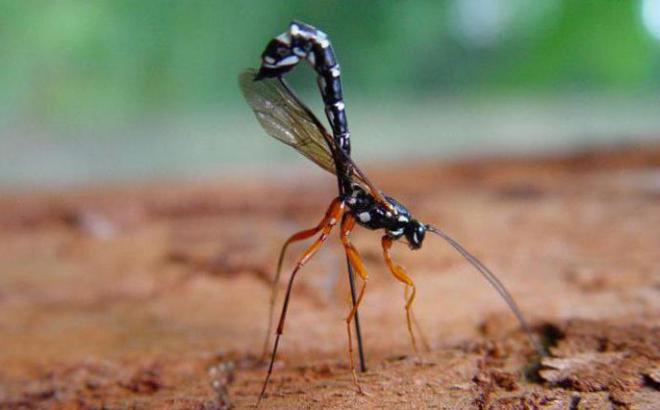

In an apartment, a slowdown in the growth of the bedbug population is possible only with a deterioration in the quality of human life. The following factors reduce the rate of reproduction:
- Low temperature or sudden changes in the room. To stop the growth of the population, it must be quite cold, since bed bugs reproduce at temperatures up to 15 ° C. At the same time, the rate of development of eggs decreases 4 times compared to room temperature. At 10 ° C, the larvae of domestic bugs do not hatch and reproduction stops.
- Low humidity combined with high temperatures will dry out the masonry. The larvae of bedbugs and adults (this is how "adult" insects are also called) are able to make up for the lack of moisture with regular nutrition.
- Prolonged lack of food does not allow the larvae to grow and the females to lay eggs. Already 15 days without food lead not only to a complete stop of reproduction, but also to a slowdown in all processes in the bug's body.
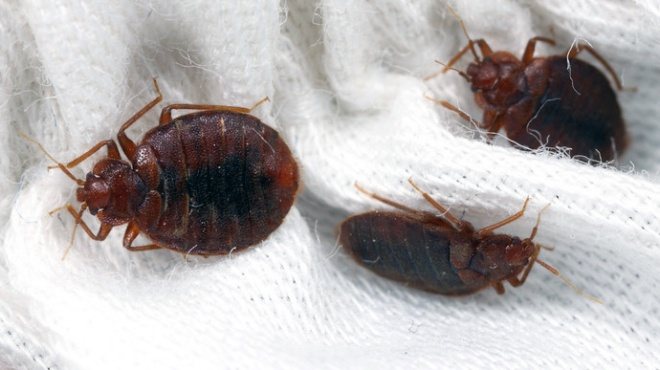

Unlike cockroaches, the rate of reproduction of bedbugs is not affected by the sanitary situation in the apartment. These parasites reproduce successfully in clean rooms. But they love clutter, it is among the things that people do not touch for years that they hide in daylight.
Let's figure out whether it is possible, with the help of thermal effects, not only to stop reproduction, but also to achieve the destruction of insects. According to entomological studies, it kills bedbugs by raising the temperature in the apartment to 45 ° C for 1 hour or freezing the room to 17 degrees below zero for a whole day.


In modern apartments, none of these conditions can be met, therefore, the only effective way to stop the breeding of bedbugs in an apartment is to use insecticides. All other methods either greatly complicate a person's life, or insignificantly affect the growth of the population.
Chemical agents against bedbugs
The most effective in the fight against domestic bugs are considered chemical agents that differ in the type of action ("Executioner", "Klopomor", "Combat" and others). Some drugs are aimed at carrying out several treatments at a certain interval.
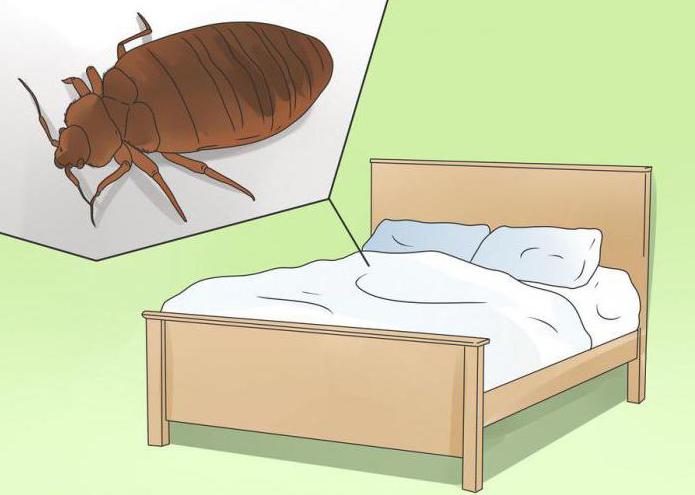

Repeated use is required in order to have time to destroy the hatched generation before reaching puberty. Otherwise, a new offspring will deliver troubles to a person at night. Other insecticides remain active for several months and are represented by microencapsulated preparations.
The body's response to fasting
In 1914, entomologist Bakota conducted a series of studies on how long bugs can live without food. He mixed 2 populations of insects: juveniles and adults and studied them for 18 months. Throughout this period, the bugs were without food and many of them survived. Similar experiments were carried out later by S. Jones. There were 51 juveniles under his supervision. Until they grew up, the bugs ate regularly, and later they were left without food. The average lifespan of a bedbug that did not feed on blood was 4.5 months. The most hardy individual was able to live up to 6 months. Further tests showed:
- The survival characteristics of new strains of bedbugs are different. Some of them may live longer, others less. For example, in 2009, entomologists found that a strain of parasites that live in Virginia lived without food for no more than 2 months.
- The survivability of bloodsuckers is affected by temperature conditions. The development of bedbug nymphs was delayed at the first stage, with one-time feeding. At the same time, the study showed that without food and with changes in various temperatures, the lifespan of the parasites changed dramatically. After eating, nymphs lived 28 days at 26 ° C, while adults lived 39 days. The nymphs' lifespan dropped sharply to 17 days when the air temperature was raised to 37 ° C. Adult bugs lived 33 days.
Bedbugs need food to reproduce, so the first thing to do to keep the bloodsucker colony from growing is to deprive them of food. But at the same time, you need to know when the path to food is cut off, they will go in search of new victims, which will lead to the spread of infection. Based on this, we need to act in a comprehensive manner.
Life without food
How long do bedbugs live without food? With a shortage or lack of food, bedbugs will be forced to migrate. It is easier for them to search for comfortable living conditions in apartment buildings. They penetrate into adjacent rooms through cracks in the walls and ventilation openings. If the parasites live in a private house, they have nowhere to go. Then they feed on the blood of animals living on the site, it can also be rats and birds.
Among the bugs, the fact of cannibalism was observed. With prolonged fasting, some specimens are able to suck the juices from their fellow neighbors if they smell blood on them. In this case, the affected individual dies. It is not worth counting on the fact that parasites will gradually destroy themselves, since such cases are very rare. Often in anticipation of a person - parasites fall into suspended animation.
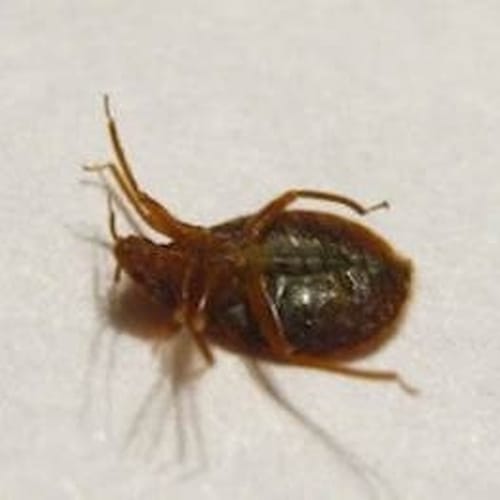

Biological disposal method
The ideal solution to get rid of bedbugs once and for all has not been found. Most of the methods and preparations are capable of destroying bedbugs and larvae, but are powerless against the eggs of parasites. Therefore, the room has to be processed many times. In the natural environment, the number of bedbugs parasitizing on warm-blooded animals (rodents and birds) is regulated by superparasitic insects: wasp and flies. The latter, in the eggs of bedbugs, lay their own eggs. The emerging larva comes out infected, because alien larvae develop in its body. As a result, after the first two molts, the young bug often dies. Alien larvae pupate in his body and emerge as adult insects.
It is quite natural that at home getting rid of bedbugs by biological methods is unlikely, because not everyone will agree to the presence of flocks of midges in the apartment, capable of controlling the number of bedbugs at a certain time. To date, insecticides are the most effective in the fight against bed parasites.
Favorable conditions for life and reproduction
House bugs are a synanthropic parasitic species that cannot imagine their existence without a person. They feed exclusively on human blood. Pets, as a rule, are not touched. Due to their biological structure, it is extremely inconvenient for them to wade through the fur of animals to the source of food. But in times of famine, they can overcome these difficulties and attack a pet or other representatives of the fauna. Bed bugs use blood at all stages of their development: from larvae to adults of both sexes.
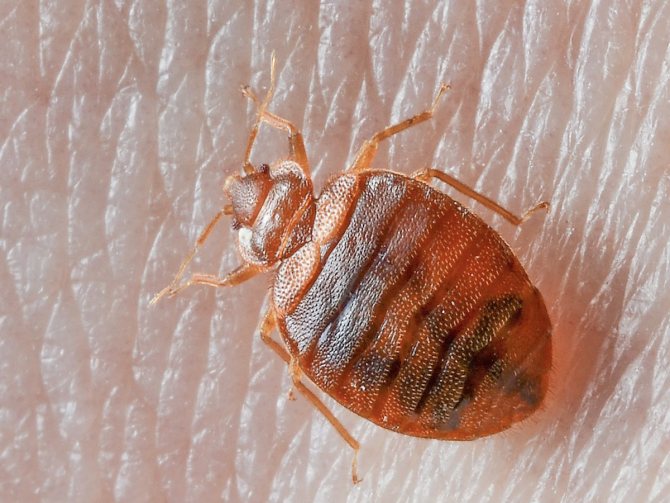

A favorable condition for the life and reproduction of bedbugs is food - human blood
- The first instar larva, which has just emerged from the egg, needs to drink about a third of a milligram of blood to move to the next level.
- At each subsequent age, the larvae consume more blood than in the previous one. This is a necessary condition for molting and the transition to the next age step.
- Adults drink up to 7 mg of blood per feeding.
Normal feeding occurs once every 5-10 days, but in extreme conditions, bugs can survive without food for up to 18 months, first absorbing only the moisture contained in the air, and then falling into a state of numbness. Moreover, they are quite hardy. For example, at low humidity and an air temperature of 35–40 ° C, adults show miracles of resistance to drying out, losing only a third of their own weight. But already at 50 ° C, bugs at all stages of development, including eggs, die.
In the Middle Ages, residents of European countries widely used this fact to combat bedbugs. Hard-to-reach places of their accumulation were treated with steam from a special device, like a teapot with a long spout. Today, many pest control companies use the hot air of a construction hair dryer or heat gun for these purposes.
In general, house bugs are able to survive over a wide range of temperatures. When the air is cooled below 16 ° C, the life processes in the body of insects slow down, the same numbness sets in - a state of suspended animation or hibernation, which prolongs the time of their existence, and without eating and preserving vitality. For some time, bedbugs are able to survive even at sub-zero temperatures. For example, at a temperature of -10 ° C they can hold out for at least five days, and at -32 ° C - only 15 minutes.
Low temperatures can be used effectively to get rid of bedbugs in folds of clothes or bedding. To do this, it is enough to put things in the freezer, having previously packed them in plastic bags, and set the appropriate temperature regime on the device.
Favorable temperature conditions for life and reproduction:
- At an air temperature of 20 to 35 ° C, bed bugs reproduce most intensively, but the total life span of individuals is somewhat reduced.
- Outside this interval, the lifespan increases, but the reproductive capacity decreases sharply.
House bugs take root well in almost any house and apartment, regardless of their sanitary condition. And if the conditions seem unfavorable to them, they can easily migrate, move to other more comfortable rooms, using various cracks, loopholes, ventilation openings and even the outer walls of houses for this.
- Adults are capable of covering distances of over one meter per minute.
- Due to their small size, the larvae are less mobile and travel about 25 cm during the same time.
Breeding features
The reproduction of insects is directly related to the fertilization of the female, and this process is very unusual in bedbugs. Mating takes place through the so-called traumatic insemination. The male, with his genitals, literally rips open the female's abdomen and introduces sperm into the resulting hole, which enters a special storage organ, available only for domestic bugs, and is able to stay in it for a long time. As the eggs form, the germ cells are removed from the storage and enter the ovaries through the egg tube. One insemination can be enough for a female for her whole life. Sperm cells are safely stored in her body and consumed as needed. The male, on the other hand, is able to make up to 200 females happy and not only them per day.
Interesting fact. Due to their biological characteristics, male bugs do not see the sex differences of objects for mating, and therefore often inseminate each other, as a result of which almost the entire population has traces of wounds on the abdomen. Spermatozoa that get inside the inseminated males do not die, but connect with their own and are used to inseminate the next individuals.
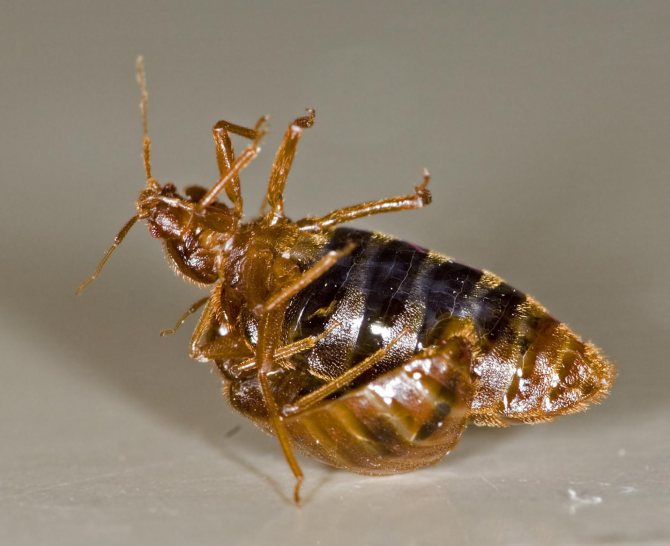

Mating bugs occurs in a very unusual way, which distinguishes them from representatives of other species of insects.
The injured tummies of the bugs are healed thanks to special enzymes that are all in the same storage organ.It is noteworthy that the sex cells obtained during insemination can be used by the female not only for fertilization, but also as food for her own body in the event of a prolonged hunger strike, which undoubtedly increases the individual's chances of survival. Sometimes she can also digest some immature eggs in order to restore vitality for bearing the remaining ones. The female is able to lay up to 5 eggs per day. And during the entire life of one individual, their number ranges from 250 to 500 pieces. This feature provides an almost continuous process of population reproduction.
Video: mating bedbugs
general information
Bed parasites are relatives of Hemiptera water striders, shit bugs, etc. They are a family of 100 species. But only one species uses the dwelling of people and parasitizes there. By the time their owners find them, they have already managed to breed offspring from several generations. Their reproduction directly depends on access to food and diet.
Immediately after sucking, the male is ready to mate, and the female is ready to receive the semen. For one meal, up to 7 μl of blood is sucked out. This amount is enough for a week to digest and rest.
Fight
Even today, bed bugs are a real problem for humans. Having appeared once in a house or apartment, it is very difficult to get rid of them. Especially if it is an old, multi-storey building.
How to get into the house
Initially, insects may appear not specifically in your apartment, but for example in the next one. And after a while, they will definitely appear in you. There are several ways to enter another apartment:
- Through ventilation shafts;
- Through the slots of the sewer pipes;
- Can be brought on clothes from a room infested with bedbugs;
- By purchasing used furniture.
Prophylaxis
You need to be extremely careful when spending the night in a hotel, hostel. In such establishments, bugs are usually frequent guests. To prevent the appearance of parasites in your home, you need to take some measures:
- At least once every six months, you can carry out pest control in an apartment on your own;
- You should not buy second-hand furniture, household and electrical appliances from your hands;
- Do not visit houses, apartments infected with parasites;
- Returning from a business trip, carefully check your luggage;
- If there are blood-sucking insects in the next apartment, you should close up all the cracks through which bugs can penetrate;
- Hang a mesh with a fine mesh over the opening of the ventilation shaft.
Deliverance
If the bugs have already entered the apartment and began to multiply effectively, you must immediately take measures to destroy them. It is believed that if you leave home bloodsuckers without food, then they will all die of hunger. This is not at all the case.
How long can an insect live without food? An adult can survive without food for up to 12 months. Under unfavorable temperature conditions and lack of food, they fall into suspended animation. But as soon as food (human blood) appears, the insect comes to life again and returns to its previous way of life.
Fighting pests with low temperatures is also not relevant and, moreover, not always possible. Therefore, the most effective method is chemical exposure. However, not all chemicals are capable of destroying pests once and for all.
The effect of many drugs is directed only to adults and larvae, but the eggs of the female are covered with a special membrane through which the poison does not act on the egg. And after a certain time, the bugs will reappear.
To get rid of bloodsuckers forever, it is better to contact the special services of the sanitary and epidemiological station. If you decide to process the premises yourself, then you must adhere to all safety standards and rules.
Lack of experience in this event may not give the desired result.Before proceeding with the processing, read how to proceed correctly, or watch the work of professionals on video.

